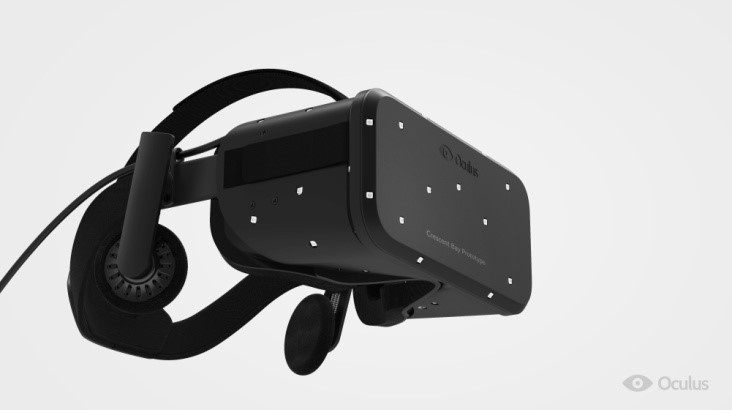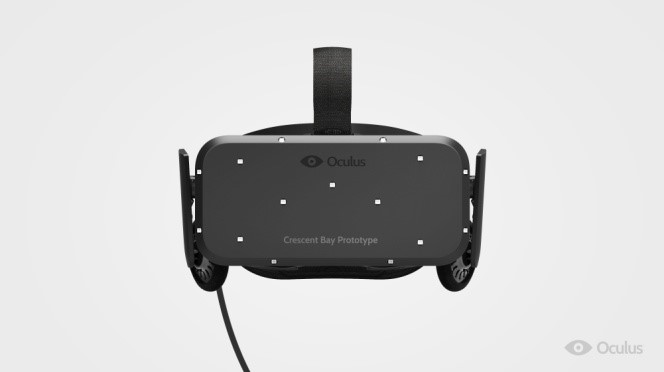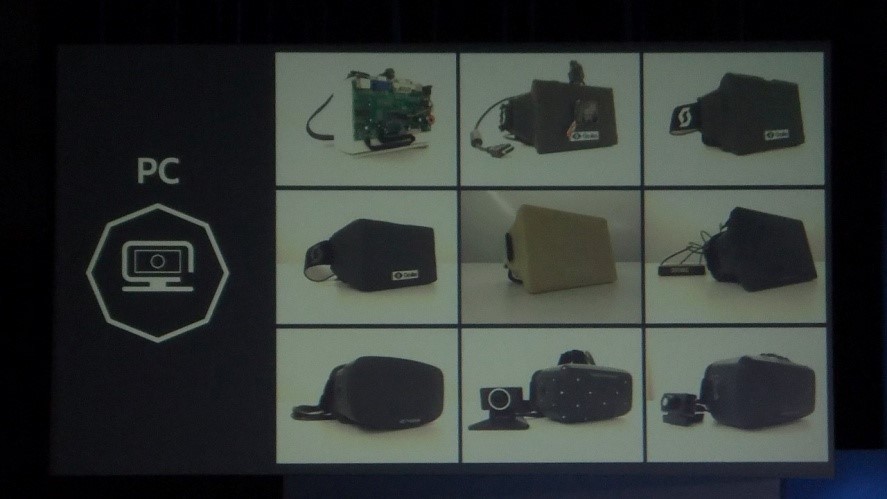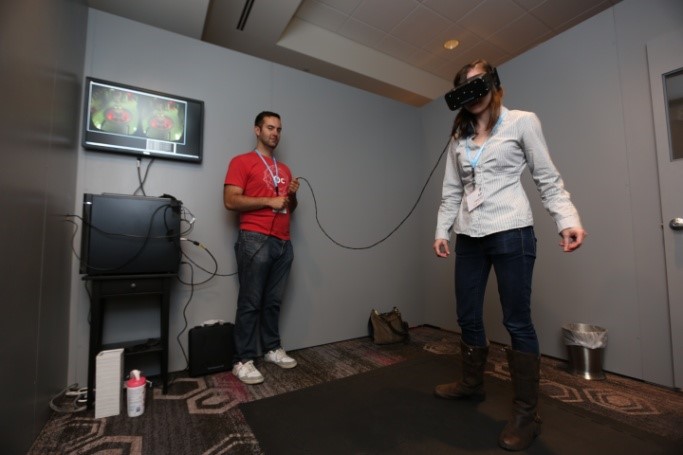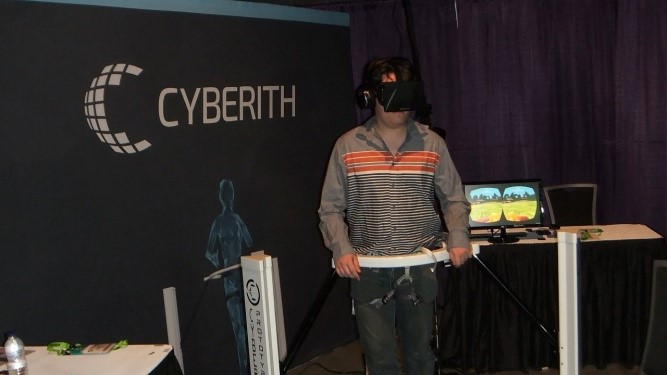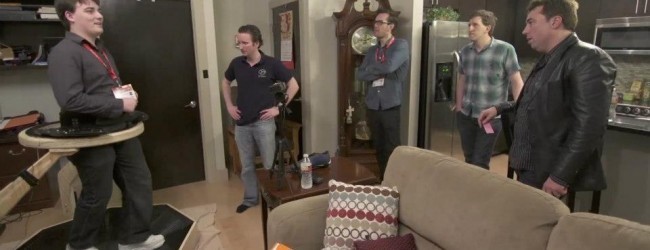Hands On With Oculus Rift Crescent Bay: Finally Achieving Presence
Presence: that's the word of the day and the ultimate goal of virtual reality. Presence refers to that point where your body and mind accepts the virtual world as being as real as the physical world. You may consciously know you are in a digital fantasy, but your subconscious and your body's reaction tell a very different story. In fact, the story is so far apart, it's a battle of wills between what your conscience is telling you and how your body really wants to react.
Oculus VR's Crescent Bay demo was my first real experience of presence.
First, let's get the specs out of the way. The actual resolution count was kept a secret, but it's definitely sharper than the Oculus Rift DK2. I didn't see an obvious screen door effect where you see black gaps between the pixels, and this is thanks to better optics and higher resolution. Good stuff!
Next, the tracking is a full 360 degrees. The Oculus Rift DK2's tracking was primarily forward-facing, so Crescent Bay was definitely an improvement. I noticed that the optical camera in the room was placed pretty high to capture all the motion. We'll have to wait and see what the placement is expected to be like when they eventually get to a consumer version.
The directional audio headphones were a new addition too. Directional audio is now part of the Oculus SDK, and while users can choose to use their own audio headphones, the goal is for the Oculus Rift to be a complete solution with a standardized experience delivery.
Finally, while this wasn't heavily promoted, Crescent Bay was running on the new Nvidia GTX 980 graphics cards (Maxwell), and this resulted in a VR experience with no perceptible latency. Nvidia's new class of GPUs have been enhanced with features to dramatically reduce latency by as much as 24ms, and according to Oculus' Software Architect John Forsyth, AMD's GPU hardware has similar benefits that will be unlockable with future software developments.
The demo room was set up as a standing experience, and the user was relegated to staying inside a raised carpet about four feet by four feet square. Outside this range, the camera loses tracking and everything goes wonky.
Get Tom's Hardware's best news and in-depth reviews, straight to your inbox.
The first demo has you standing in front of a hollow chasm. Looking forward, you see the word “Oculus”. If you look down, you think "I don't want to fall down there". It was a real effort to take that leap of faith and step forward. I knew I had a wide floor around me I knew this was just a digital fantasy. I knew I was safe no matter where or how I walked. Despite these convictions, I found myself gingerly tapping my foot on the floor before taking steps into what my subconscious perceived as a precipitous gravity swallowing death.
The joke was on me because just as I thought the demo was over and I had seen it all, the assistant said "Ok, Neil! Let's get started!"
What followed was a wide range of mind-altering experiences. What is now a simple chasm in comparison was turned into a ledge at the top of a bustling city. I was transported to another planet where I came face to face with an alien friend that I inadvertently insulted by looking away. I took a trip with Alice to Wonderland and saw my disembodied mask in a mirror that captured every nuance of where and how my face was positioned. I landed in a Crysis-like slow-motion battlefield with cars flying overhead and shrapnel blasting at and through me in all directions. I even went toe-to-claw with a couple of dinosaurs. My conscious mind and ego knew I could take them...but I had my doubts.
This is the presence I experienced with Oculus VR's Crescent Bay.
So why did I experience presence with Crescent Bay like no other demo I had experienced before? What made this so convincing?
Was it the resolution? No. Latency? No. Surround audio? Possibly, but unlikely. 360 degree tracking? I think that's part of the answer, but no.
There were two things I noticed about these demos that were strikingly different from everything else I had seen. First, everything was at a life-sized scale. I'm sure things were proportioned well before, but it just felt as though everything was in proper relation to my physical height. Even when I looked down and saw that my torso, legs and feet were completely absent, it didn't matter because it was unnecessary to look at my appendages and remind myself that they are there.
In my humble opinion, the biggest contributing factor here was that I was standing up. Think about it: The whole experience was one-to-one movement. The ledge was no different from any other ledge, except this time I was actually walking on it. The dinosaurs were scary not just because I heard them approaching from another room; they were scary because I was standing in front of them. My physical body and the virtual experiences were speaking the same language.
In contrast, with the exception of cockpit experiences like EVE: Valkyrie, Titans of Space, and VR movie theaters, the expectation of seated positions is forcing our bodies to speak a very different language than what our minds are being told to experience. Unless we are actually standing up when our virtual character is standing up, that's enough of a reminder that the fantasy world is not real.
If I'm right, the only way presence will be possible is if our virtual characters are rolling around like Professor Xavier with matching height and perspective. The body and mind have to be speaking the same language or the presence is broken.
I have every confidence that Oculus will reach those all-important specs of little to no latency, high resolution and convincing directional audio. This is inevitable. While haptics and gesture control are important, these demos managed to accomplish presence without those benefits. More and more, I'm thinking that the bigger challenge to overcome has less to do with resolution and technical specs and more to do with letting our bodies do what comes naturally.
Let me share my point a different way. Pretend for a moment that resolution and audio was the determining factor. Would life be any less real if we wore glasses that were heavily scratched and our left ear was plugged? I would argue that life goes on.
So let me conclude with some soul-searching questions. While Oculus has repeatedly stated otherwise, are their actions of demonstrating walking to the press an indication that the seated position will eventually be going the way of the dodo bird? If standing experiences are as convincing as they appear to be, what's the next phase of VR development beyond displays and head tracking? Are products like the Virtuix Omni and Cyberith Virtualizer enough to bridge the communication gap between virtual body and practical mind, or should we brace for something radically different?
Neil Schneider is the Executive Director of The Immersive Technology Alliance. Non-profit and non-proprietary, the ITA is the official voice and standards body for immersive technologies like AR and VR. Mr. Schneider also runs Meant to be Seen which is credited as being the birthplace of The Oculus Rift and marks the spot where Palmer Luckey and John Carmack first met.
Seth Colaner previously served as News Director at Tom's Hardware. He covered technology news, focusing on keyboards, virtual reality, and wearables.
-
Simon Anderson I dunno i'm sure after sitting for a while your brain will let you feel less "weird" about the difference between your visual height and actual height. You brain generally tends to do that quite easily... like how if you look out the window of a car for long enough then stop, the road still looks like it's moving.Reply -
jmcwill I think a Sensory Deprevation tank or something of similar consequence is the way to go!Reply
